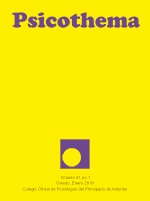Abstract
Although some meta-analyses have identified potential moderators associated with treatment outcomes for pediatric obsessive-compulsive disorder (OCD), there is as yet no consensus regarding the influence of anxiety and depression symptoms on the recovery from pediatric OCD. A meta-analysis was conducted to investigate the effects of depression and anxiety symptoms and their comorbidities on the efficacy of CBT in pediatric OCD, as well as other
potential moderators that may be associated with outcomes. Method: An exhaustive literature search from 1983 to March 2021 located 22 published articles that applied cognitive-behavioral therapy (CBT) to pediatric OCD, producing a total of 26 treatment groups. Some of the moderator variables analyzed included age, gender, comorbidity baseline in anxiety, depression and obsession, and methodological quality. Results: Results showed that the psychological treatment of OCD achieves clinically significant effectiveness, both for measures of obsessions and compulsions (d+ = 2.030), and for anxiety (d+ = 0.613) and depression (d+ = 0.451). An explanatory model for the CY-BOCS effect sizes showed that three moderator variables were statistically related: the mean of the CY-BOCS (Children’s Yale Brown Obsessive Compulsive Scale) in pretest, the effect size for anxiety, and the mean age of the sample. Conclusions:
CBT reduced obsessive-compulsive symptoms and, to a lesser extent, anxiety and depression symptoms. Since anxiety symptoms are reduced with the same therapy, resources would be saved compared to other treatments.
